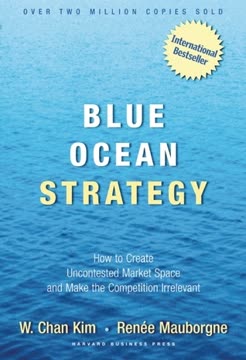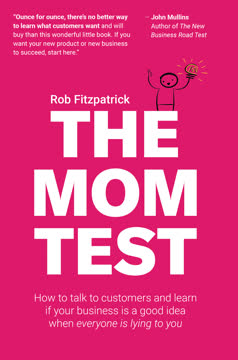Key Takeaways
1. Project leaders are the glue that binds teams together
"Project leaders intuitively do everything they can to create cohesive teams. They act as the glue that binds teams together, filling gaps in process and communication wherever there is a need."
Bridging gaps. Project leaders go beyond traditional project management roles by actively fostering team cohesion and filling communication gaps. They serve as catalysts for success by:
- Identifying and addressing process inefficiencies
- Facilitating clear communication between team members
- Anticipating and resolving potential conflicts
- Ensuring all team members are aligned with project goals
Emotional intelligence. Successful project leaders leverage their emotional intelligence to create a positive team dynamic. They:
- Build strong relationships with team members
- Recognize and address individual needs and concerns
- Foster a supportive and collaborative work environment
- Motivate team members by connecting their work to the larger project purpose
2. Build rapport quickly to establish trust and influence
"When you have strong relationships, all other project tasks are easier because your team is receptive to you. When you lack rapport, every request will feel like an uphill battle."
Be approachable. Project leaders can quickly build rapport by making themselves accessible and approachable to team members. Strategies include:
- Maintaining an open-door policy
- Using friendly body language and facial expressions
- Actively listening to team members' concerns and ideas
- Showing genuine interest in team members' well-being
Give and show appreciation. Building rapport involves both giving and showing appreciation for team members' efforts. Effective techniques include:
- Offering small gestures of kindness (e.g., keeping a candy bowl at your desk)
- Providing specific, meaningful praise for good work
- Recognizing team members' contributions in public settings
- Organizing team events and celebrations to foster camaraderie
3. Run productive meetings to boost team efficiency
"The single most powerful factor in job satisfaction was how one feels about the effectiveness of the meetings he or she attends; negative feelings were exacerbated as the amount of time spent in meetings increased."
Prepare thoroughly. Effective project leaders ensure meetings are productive by preparing in advance:
- Clearly define the meeting's purpose and desired outcomes
- Create a focused agenda and distribute it beforehand
- Invite only necessary participants
- Prepare any required materials or presentations
Facilitate effectively. During the meeting, project leaders should:
- Start and end on time
- Keep discussions on track and aligned with the agenda
- Encourage participation from all attendees
- Summarize key points and action items
- End with clear next steps and responsibilities
4. Ask effective questions to drive progress and uncover insights
"As a project leader, my daily charter is to identify the most efficient way to get things done. When my team raises a question to me, I aim to turn around an answer to them quickly. When they are blocked, it's my job accordingly to identify the fastest route to unblock them."
Use open-ended questions. Project leaders should ask questions that encourage detailed responses and deeper thinking:
- "What do you think about...?"
- "How might we approach...?"
- "What are the potential consequences of...?"
Follow up effectively. After receiving initial responses, project leaders should probe further:
- Ask for clarification on vague or ambiguous points
- Request specific examples to illustrate ideas
- Explore alternative perspectives or solutions
- Encourage team members to elaborate on their thoughts
5. Take great notes to capture and communicate critical information
"If you take great notes, you will make a fantastic first impression. One of my coworkers once told me that he was so impressed with my notes after his first set of meetings with me that he went home and told his wife, 'You should see these notes. They are better than the meeting!'"
Focus on key information. Effective note-taking involves capturing essential details:
- Main discussion points and decisions made
- Action items and their assigned owners
- Important deadlines and milestones
- Key questions or concerns raised
Organize and share. After the meeting, project leaders should:
- Review and organize notes for clarity
- Summarize key points and action items
- Share notes with relevant team members promptly
- Follow up on action items to ensure progress
6. Synthesize information to provide valuable guidance
"When you actively practice synthesis, you blend everything you've acquired into your body of knowledge with one special ingredient—you. You add your thinking to form new extrapolations and applications. Your contributions are no longer just a distillation of facts. Instead, you begin to bring fresh insights to the table."
Connect the dots. Project leaders synthesize information by:
- Identifying patterns and relationships between different pieces of information
- Drawing connections between seemingly unrelated ideas or data points
- Considering the broader context and implications of information
Provide actionable insights. After synthesizing information, project leaders should:
- Communicate key findings and implications to the team
- Offer recommendations based on synthesized insights
- Guide decision-making processes using the synthesized information
- Anticipate potential challenges or opportunities based on the synthesis
7. Create alignment by setting clear goals and connecting work to purpose
"When people understand how their work matters, they feel more highly motivated because they know their work is contributing to a greater vision."
Set clear, measurable goals. Project leaders should establish unambiguous goals that:
- Are specific and quantifiable
- Have a defined timeline
- Are agreed upon by all stakeholders
- Align with the overall project vision
Connect daily work to purpose. To maintain motivation, project leaders should:
- Regularly communicate how individual tasks contribute to project goals
- Share project progress and successes with the team
- Recognize and celebrate team members' contributions to goal achievement
- Address any misalignments between daily work and project objectives
8. Plan strategically, but remember planning is optional
"Planning is not useful to your team when it's only a reflection of the past. It's most useful when it helps you get things done in the future."
Assess planning needs. Project leaders should evaluate whether planning is necessary by considering:
- Project complexity and scope
- Team size and composition
- Stakeholder expectations
- Timeline and resource constraints
Keep plans flexible. When planning is needed, project leaders should:
- Focus on high-level milestones rather than detailed task lists
- Allow for adjustments as new information becomes available
- Regularly review and update plans with the team
- Use plans as a guide rather than a rigid framework
9. Preempt risks to ensure smooth project execution
"All projects have risk. Project leaders are often brought onto a project to help reduce the risk and to meet an important deadline. Therefore, understanding how to best manage risk is important to the success of that role."
Identify potential risks. Project leaders should proactively:
- Conduct a thorough risk assessment at project initiation
- Encourage team members to share potential concerns or challenges
- Consider risks from various perspectives (technical, financial, operational)
- Regularly review and update the risk assessment throughout the project
Develop mitigation strategies. For identified risks, project leaders should:
- Prioritize risks based on likelihood and potential impact
- Create contingency plans for high-priority risks
- Assign responsibility for risk monitoring and mitigation
- Regularly communicate risk status and mitigation efforts to stakeholders
10. Personalize processes to maximize team productivity
"The best process is the one that gets used. Therefore, choose the one that your team is willing to commit to using so that the data that are captured are accurate and complete."
Assess team needs. Project leaders should:
- Understand team members' strengths, weaknesses, and preferences
- Evaluate existing processes and tools used by the team
- Identify pain points and areas for improvement in current workflows
Collaborate on process development. To ensure buy-in, project leaders should:
- Involve team members in process design and selection
- Encourage feedback and suggestions for improvement
- Be open to experimentation and iteration
- Regularly review and adjust processes based on team feedback and project needs
11. Expedite handoffs to improve overall project efficiency
"Relay racers know that running fast alone is not enough to win the race. They train heavily on how to make a clean pass. They learn to make sure that they can hold batons at just the right angle so that they can make solid contact with its recipient. They know there is no room for mistakes, because a small fumble can cost them the race."
Optimize handoff processes. Project leaders can improve efficiency by:
- Clearly defining handoff points and expectations
- Establishing standardized handoff procedures
- Providing necessary context and information for smooth transitions
- Facilitating clear communication between team members involved in handoffs
Monitor and address bottlenecks. To prevent delays, project leaders should:
- Identify potential bottlenecks in the workflow
- Proactively address issues that may slow down handoffs
- Encourage cross-training to increase team flexibility
- Regularly review and optimize handoff processes
12. Negotiate outcomes to keep projects on track
"When you negotiate toward an outcome for my projects, I always aim for win-win solutions. If I start with that state of mind, then the act of negotiation becomes a team bonding event. I guide the team to put aside differences and work together for the common good."
Prepare thoroughly. Before negotiations, project leaders should:
- Clearly define desired outcomes and priorities
- Understand stakeholders' perspectives and interests
- Identify potential areas of compromise
- Develop multiple options to propose during negotiations
Focus on collaborative problem-solving. During negotiations, project leaders should:
- Emphasize shared goals and common interests
- Encourage open communication and active listening
- Explore creative solutions that benefit all parties
- Remain flexible and open to alternative approaches
Last updated:
FAQ
What's "Glue: How Project Leaders Create Cohesive, Engaged, High-Performing Teams" about?
- Focus on Project Leadership: The book emphasizes the transition from project management to project leadership, highlighting the importance of leading people rather than just managing tasks.
- Building Cohesive Teams: It provides strategies for creating cohesive, engaged, and high-performing teams by fostering strong emotional connections and a shared sense of purpose.
- Practical Guidance: Anh Dao Pham offers actionable advice and real-world examples to help project leaders effectively guide their teams to success.
- Comprehensive Approach: The book covers various aspects of project leadership, including communication, negotiation, risk management, and change management.
Why should I read "Glue: How Project Leaders Create Cohesive, Engaged, High-Performing Teams"?
- Enhance Leadership Skills: The book provides insights into becoming a more effective project leader by focusing on people and relationships.
- Actionable Strategies: It offers practical, step-by-step recommendations that can be immediately applied to improve team dynamics and project outcomes.
- Real-World Examples: Anh Dao Pham shares her extensive experience and lessons learned from leading numerous projects, making the advice relatable and applicable.
- Broaden Perspective: The book encourages readers to think beyond traditional project management paradigms and embrace a more holistic approach to leadership.
What are the key takeaways of "Glue: How Project Leaders Create Cohesive, Engaged, High-Performing Teams"?
- Ownership and Accountability: Project leaders should take full ownership of project delivery and empower their teams to do the same.
- Building Rapport: Establishing strong relationships and open communication with team members and sponsors is crucial for project success.
- Adaptability and Flexibility: Effective project leaders tailor processes to fit their team's needs and are willing to adapt to changing circumstances.
- Focus on People: Leading projects is about leading people, and fostering a positive team culture is essential for achieving high performance.
How does Anh Dao Pham define a "project leader" in "Glue"?
- Beyond Management: A project leader goes beyond managing tasks and focuses on leading people by inspiring and motivating them.
- Ownership of Delivery: Project leaders take full responsibility for the success of the project, ensuring that all aspects are aligned and moving forward.
- Empowering Teams: They strive to bring out the best in their teams by creating an environment where individuals feel valued and connected to the project's goals.
- Acting as Glue: Project leaders serve as the glue that binds the team together, facilitating communication and collaboration across different roles and functions.
What is the "CALM method" mentioned in "Glue"?
- Closely Aligned, Loosely Managed: The CALM method emphasizes aligning the team with clear goals and priorities while allowing them the autonomy to manage their workflows.
- Trust in Teams: It relies on trusting team members to use their expertise and existing processes to achieve desired outcomes without micromanagement.
- Focus on Priorities: The method involves setting clear priorities and ensuring that the most important tasks are addressed first.
- Encourages Accountability: By giving teams the freedom to manage their work, the CALM method fosters a sense of ownership and accountability.
How does "Glue" suggest handling project risks?
- Preemptive Planning: The book advises building additional time and budget into project plans to account for unknowns and potential risks.
- Premortem Technique: Conducting a premortem helps identify potential risks by imagining a future scenario where the project has failed and brainstorming possible causes.
- Creating Redundancy: To prevent bottlenecks, project leaders should ensure that team members have overlapping skills and can support each other when needed.
- Incremental Changes: For projects involving live features, rolling out changes gradually can reduce the risk of negative impacts on users.
What are some effective communication strategies from "Glue"?
- Tailor Communication: Adjust communication style and content based on the audience, whether it's executives, sponsors, team leads, or individual contributors.
- Consistent Messaging: Regularly communicate the project's goals, priorities, and risks to keep everyone aligned and focused on what's most important.
- Nonverbal Cues: Pay attention to nonverbal communication, such as body language and tone, to better understand team dynamics and potential issues.
- Act as a Conductor: Like an orchestra conductor, project leaders should guide their teams by clearly signaling when it's time for each member to act.
How does "Glue" address the concept of "scope creep"?
- Negotiable Scope: The book emphasizes that scope is always negotiable and can be adjusted to accommodate changes without extending timelines or increasing budgets.
- Prioritization Framework: Use a decision-making framework to prioritize tasks based on speed and impact, ensuring that the most critical items are addressed first.
- Implementation Scope: Encourage teams to explore simpler solutions that meet project goals without unnecessary complexity or additional work.
- Phase Planning: Place lower-priority items in a queue for future phases, allowing the team to focus on delivering the most important features first.
What role does "synthesis" play in project leadership according to "Glue"?
- Combining Information: Synthesis involves merging separate pieces of information to form a coherent understanding of the project and its challenges.
- Deepening Understanding: By synthesizing information, project leaders can identify gaps, infer missing details, and draw conclusions that guide decision-making.
- Connecting Dots: Effective synthesis allows leaders to connect interrelated facts and create a comprehensive narrative that informs project strategy.
- Enhancing Influence: By demonstrating a deep understanding of the project, leaders can build trust and influence among team members and stakeholders.
What are some of the best quotes from "Glue" and what do they mean?
- "Project leaders take full ownership of project delivery." This quote emphasizes the importance of accountability and responsibility in ensuring project success.
- "You manage things, you lead people." It highlights the distinction between managing tasks and leading individuals, underscoring the human aspect of project leadership.
- "Be the glue that binds teams together." This quote captures the essence of a project leader's role in facilitating communication and collaboration across different functions.
- "The best way to know what will work is to actually work with the team to define it." It advocates for a collaborative approach to process development, ensuring that team needs are met.
How does "Glue" suggest building rapport with team members?
- Learn Names and Preferences: Quickly learn team members' names and communication preferences to make them feel valued and respected.
- Be Approachable: Encourage open communication by being approachable, smiling, and making yourself accessible to the team.
- Take Initiative: Proactively offer help and support to team members, demonstrating a willingness to contribute beyond assigned responsibilities.
- Show Appreciation: Regularly express gratitude and acknowledge team members' efforts to strengthen relationships and foster a positive team culture.
What is the significance of "working agreements" in "Glue"?
- Customized Processes: Working agreements allow teams to collaboratively define processes and rules that best suit their unique needs and preferences.
- Avoiding One-Size-Fits-All: By tailoring processes to the team, project leaders can avoid imposing rigid structures that may hinder productivity.
- Empowering Teams: Involving team members in the creation of working agreements fosters a sense of ownership and commitment to the project's success.
- Continuous Improvement: Regularly revisiting and refining working agreements ensures that processes remain effective and aligned with the team's evolving needs.
Review Summary
Glue receives mostly positive reviews, praised for its practical advice on project management and leadership. Readers appreciate the author's clear writing style, relatable examples, and focus on human aspects of project work. Many find it valuable for both new and experienced managers. Some criticisms include repetitiveness, basic information, and controversial advice on work-life balance. Overall, reviewers recommend it as an accessible guide for project leaders, with a few caveats regarding certain sections.
Similar Books










Download PDF
Download EPUB
.epub digital book format is ideal for reading ebooks on phones, tablets, and e-readers.




